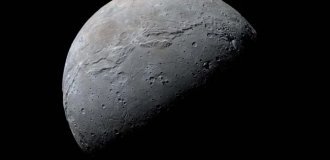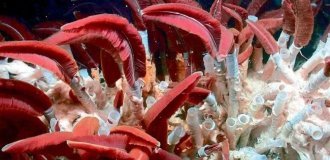Leopard seal: sometimes a cutie, sometimes a bloodthirsty tyrant (10 photos)
Leopard seals are controversial animals. These are selfish fathers and wonderful mothers. The most dangerous predators and harmless filter feeders. Dear friends and aggressive animals, whose fangs contain human blood. 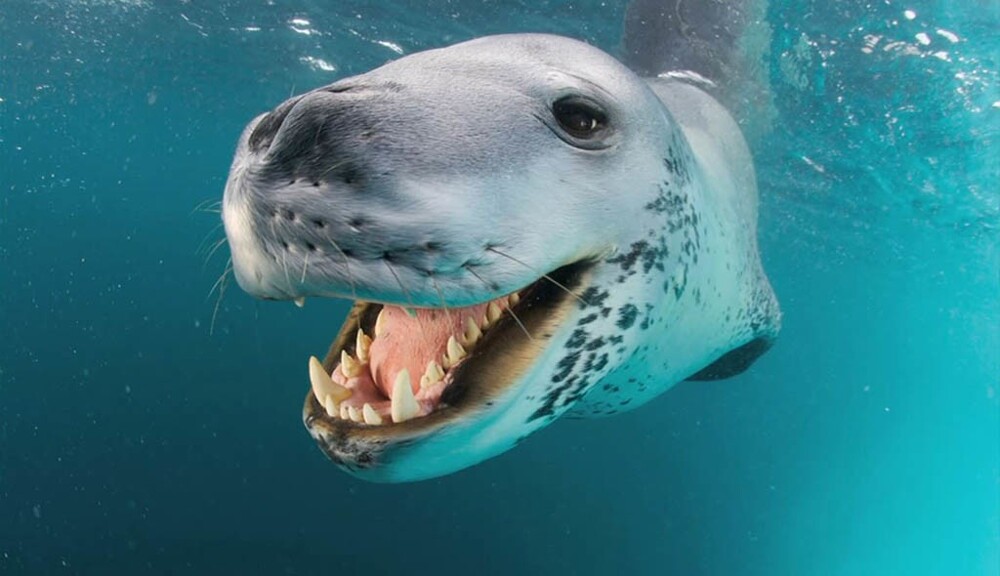
The leopard seal is not the largest animal in Antarctica, but it is one of the top three. Only killer whales are able to chase a predator up to 3.5 meters long and weighing up to 600 kilos. 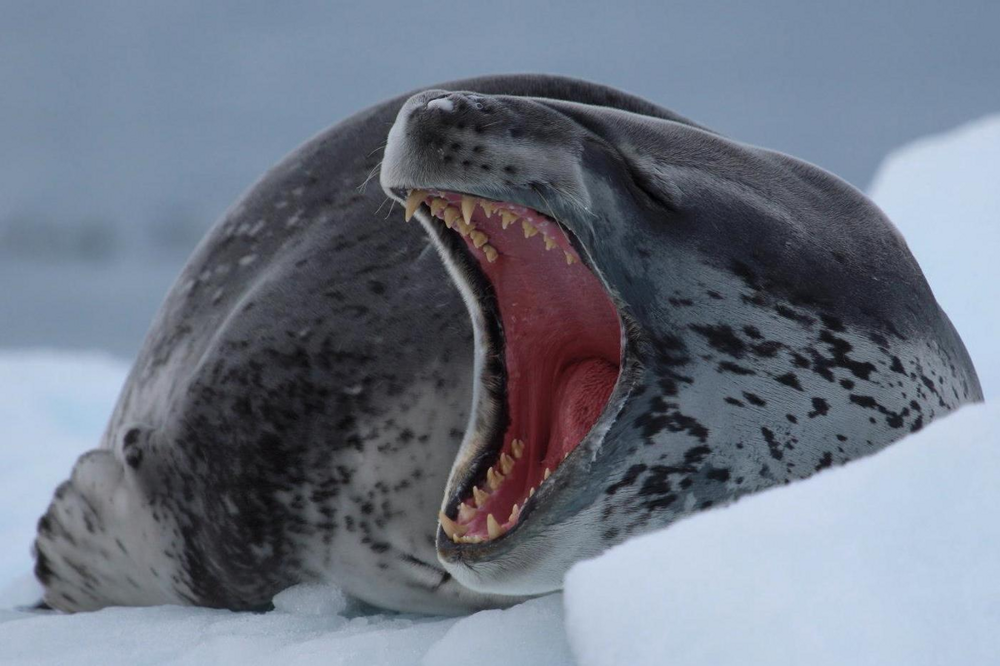
With such a mouth, let’s take a bite of the cake!
All the other living creatures of the Southern Ocean: seals, penguins, fish, squid and small invertebrates - tremble in fear of his sweet gaze and kind smile. 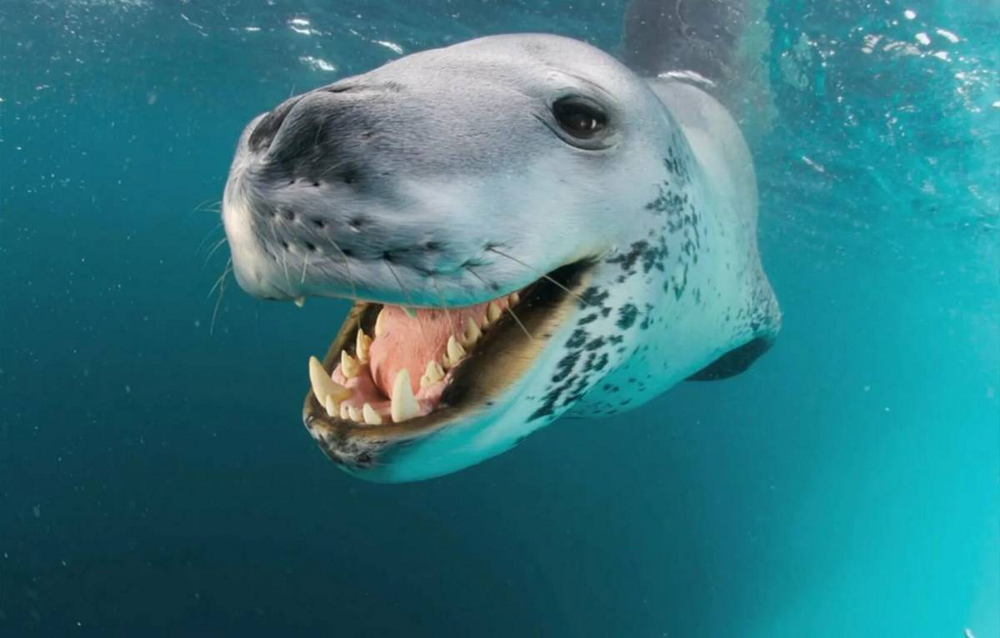
Who's the good boy here?
The leopard seal is the main predator of the Antarctic. It is difficult to feed at the South Pole, so a seal can eat anything. Against large prey, it uses 2.5 centimeter fangs and sharp incisors, which can pierce even the thickest skin and any layer of subcutaneous fat. But such a mega-predator doesn’t shun plankton either! It filters ocean fines using its molars. Their shape is such that water can be “sifted” through them, leaving the caught krill inside the mouth. 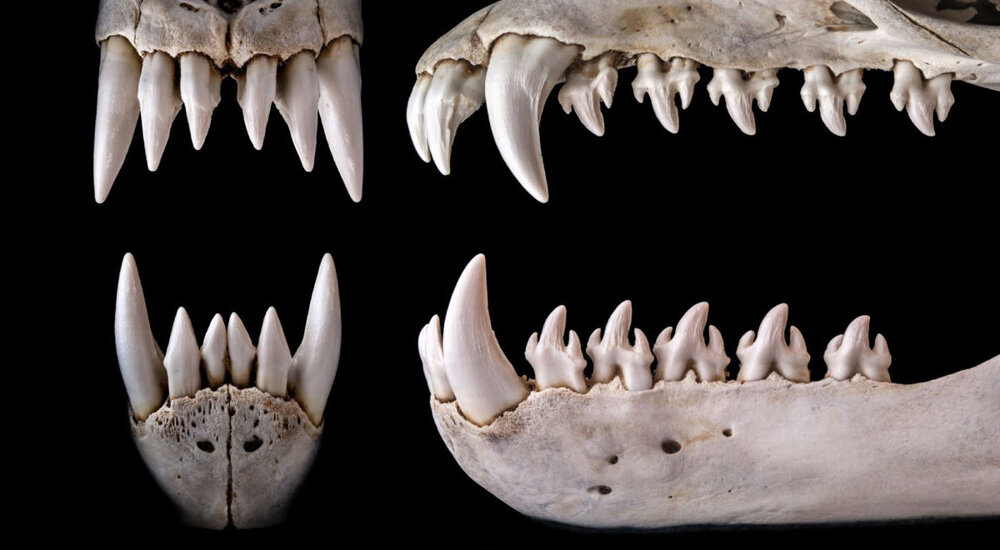
The jaws of a leopard are without muscles, mucous and other tinsel.
But these adaptations would be completely useless without a living and sharp mind capable of realizing the advantages given by evolution. Each leopard seal chooses its own prey, based on dozens of factors: from the variety of prey to the state of health. For example, off the coast of Antarctica, the density of krill is always higher, so local seals prefer to calmly filter the water without committing bloody reprisals. 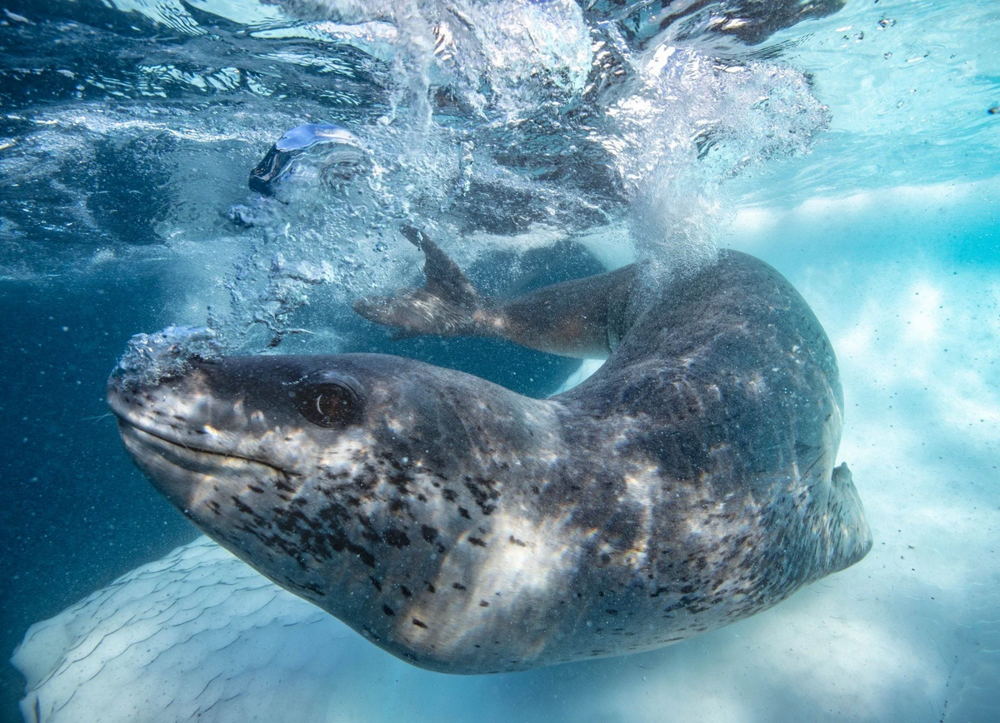
There is enough food in this place for now. But you, photographer, don’t go anywhere! Suddenly there will be no krill...
But individuals living on drifting ice, where the water is not so rich in small crustaceans, actively hunt vertebrates: fish, penguins and even young seals of other species. Our hero is the only seal capable of feeding on its own kind. 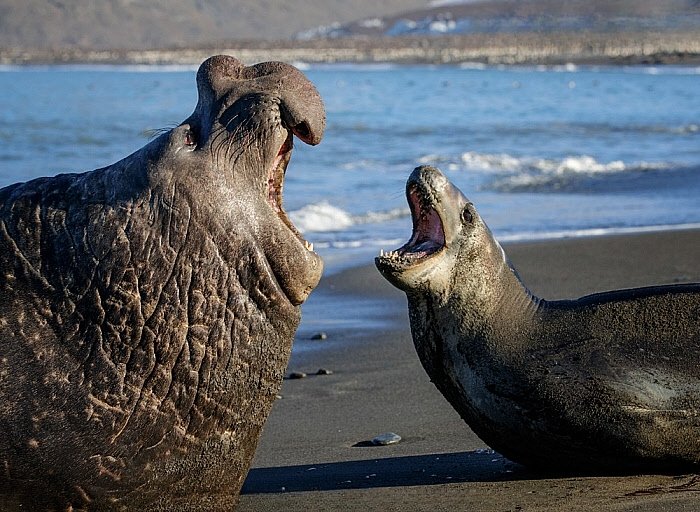
But on land, leopard seals are no longer as cool as in the sea. Therefore, they have to share the shore with other pinnipeds.
Predators hungry for meat patrol the ice border and wait for an opportunity to ambush them - an iceberg or a large piece of ice. The stunned prey will be captured and then carried to the depths, where it will no longer be able to escape and will suffocate. In a way, this is even merciful, because leopard seals have one noticeable drawback. 
Stop! We haven't agreed yet.
They don't know how to cut up their prey. For these predators, eating food is no less long and difficult work than tracking down the next meal. Sometimes leopards simply get tired of protecting their prey from other animals. They can get so desperate that they are willing to share their goodies with other leopards. 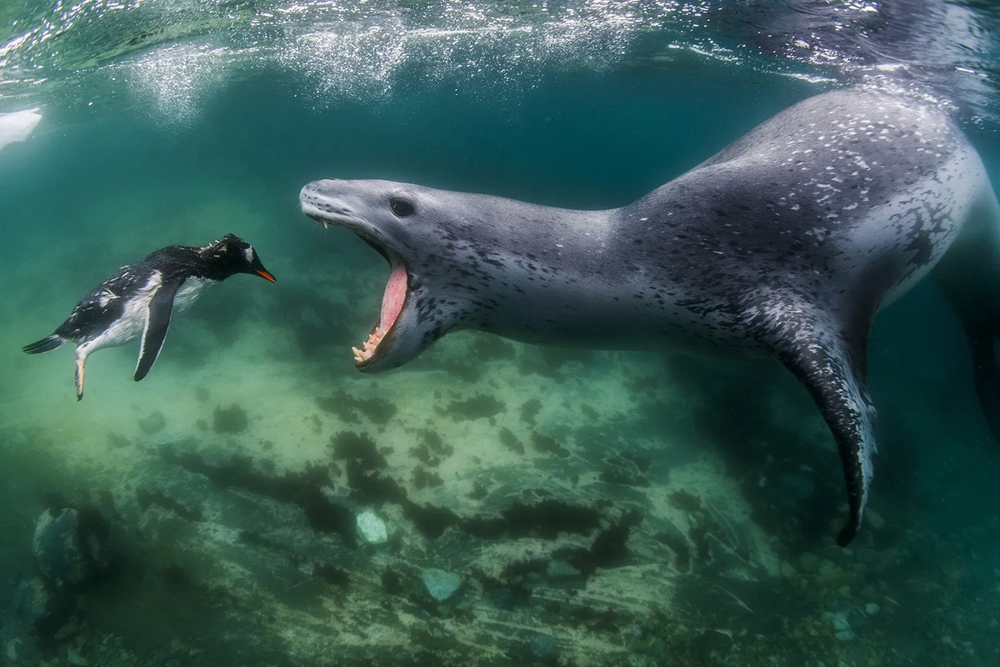
Wow, Sanya, half of the jaw needs to be replaced!
But the relationship between people and leopards is an ambiguous thing. Each animal is used to solving problems in its own way, and the reaction of these animals is poorly predictable. Many of the leopards are charismatic, playful and friendly, so much so that they offer divers to share a freshly caught fish or penguin with them. At the same time, there are frequent cases of animal aggression towards people. In 2003, there was even a murder: biologist Kirsty Brown was captured by a leopard and carried into the depths. The predator kept her underwater for 6 minutes until she died. 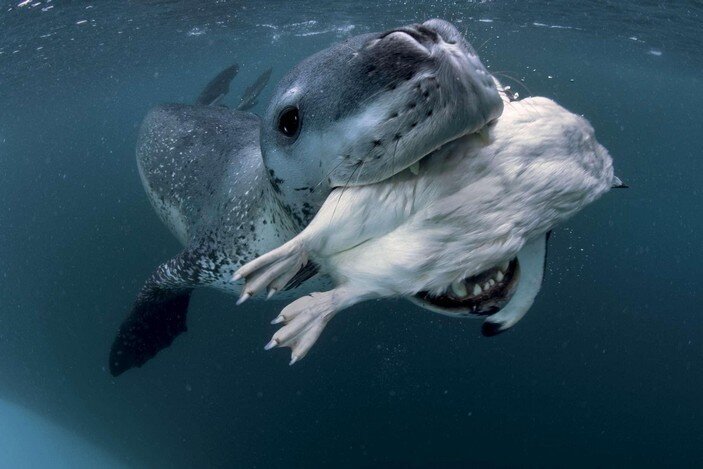
This is for you, man, otherwise it’s just skin and bones.
From the independent behavior of animals, it is easy to guess that they are staunch individualists. Outside the mating season, they do not communicate with each other either while hunting or while resting. But their behavior changes radically during the southern summer. Males divide the banks into separate territories and begin to scream loudly at each other. Sometimes this causes children. Most of them have the genes of the largest and largestwillow male of the area. 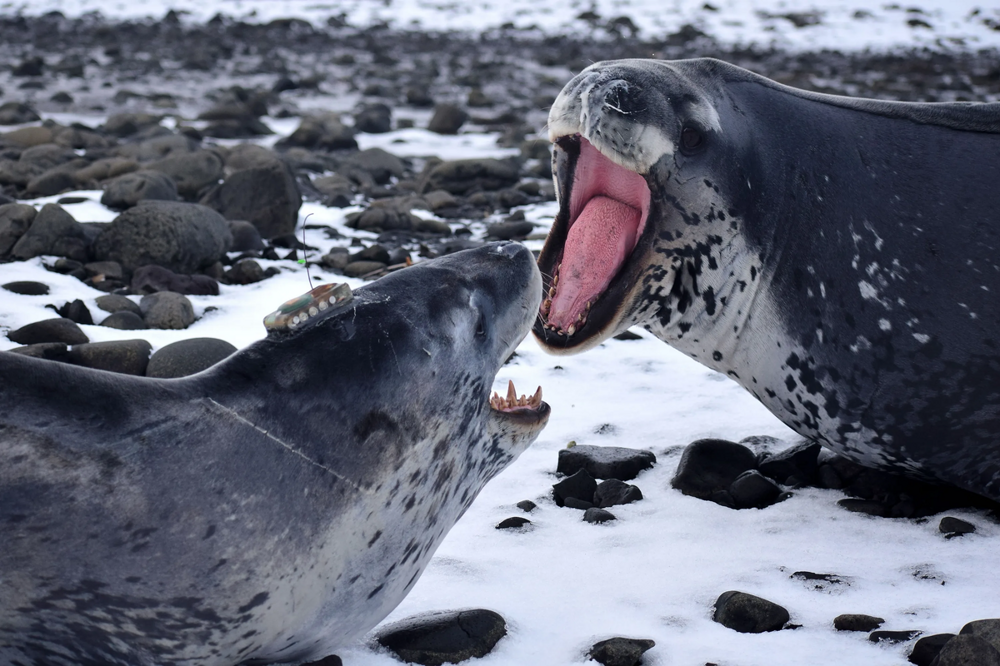
Two leopard seals (one of them a radio-controlled cyborg) fight for space on land.
After mating, the male flies off about his business, and the expectant mother digs a hole in the ice - a kind of nest. There the leopard cub will seal until milk feeding ends - about a month. Well, after that he will have to dive into the cruel reality and cold Antarctic waters to begin the life of the main predator of the Southern Ocean.




